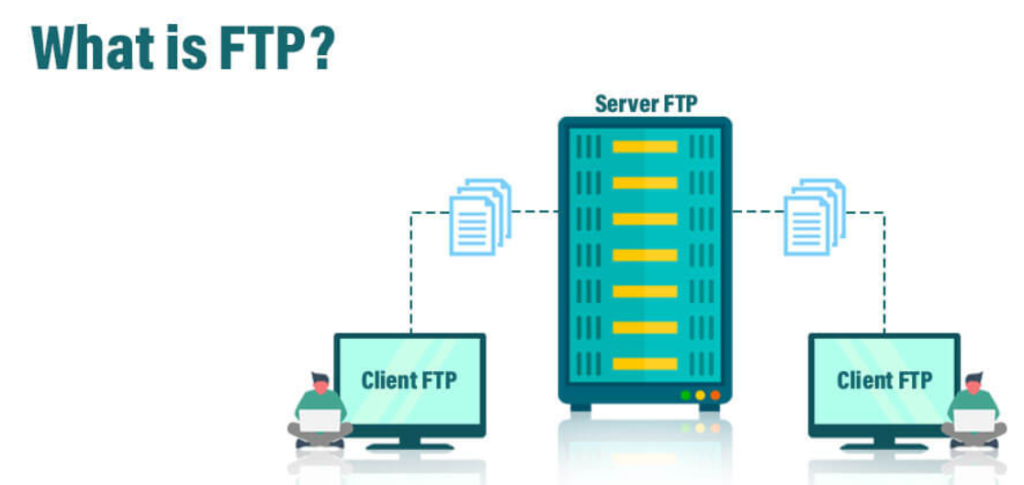What is FTP

FTP, or File Transfer Protocol, is a standard network protocol used to transfer files between a client and a server over a network, typically the Internet. It allows users to upload and download files, as well as manage files and directories on a remote server.
Table of Contents
Key Points about FTP:
- Purpose: File Transfer Protocol is designed to facilitate the exchange of files between systems. It can be used for various purposes, including transferring large files, backing up data, and managing files on a remote server.
- Components:
- Client: The software or tool that initiates the connection to the File Transfer Protocol server to request file transfers.
- Server: The system that hosts the files and responds to requests from File Transfer Protocol clients.
- Connections:
- Control Connection: Used for sending commands and receiving responses. By default, this uses port 21.
- Data Connection: Used for the actual transfer of files. This connection can be initiated in different modes (active or passive).
- Authentication:
- File Transfer Protocol typically requires a username and password to access the server, although anonymous access can be allowed for public files.
- Modes:
- Active Mode: The client opens a port and the server connects to it for data transfer.
- Passive Mode: The server opens a port and the client connects to it for data transfer. This mode is often used to bypass firewall issues.
- Commands:
- Common File Transfer Protocol commands include
GET(to download files),PUT(to upload files),LIST(to list directory contents), andDELE(to delete files).
- Common File Transfer Protocol commands include
FTP is widely supported by various operating systems and applications, making it a versatile tool for file transfer. However, because it transmits data in plaintext, it is recommended to use secure variants like SFTP (Secure File Transfer Protocol) or FTPS (FTP Secure) for sensitive data transfers.
How FTP (File Transfer Protocol) Works

- Connection Establishment:
- Control Connection: The client establishes a connection to the FTP server on port 21, which is used for sending commands and receiving responses.
- Data Connection: A separate connection is opened for transferring files. This can be done in two modes: active or passive.
- Authentication:
- The client provides credentials (username and password) to the server. If authentication is successful, the client gains access to the server’s file system.
- File Operations:
- Commands: The client sends commands to the server through the control connection (e.g., LIST to list directory contents, RETR to retrieve a file, STOR to store a file).
- Data Transfer: For file transfers, the data connection is used to transmit the actual file data.
- Closure:
- After file transfer operations are completed, the client can terminate the connection, closing both the control and data connections.
Advantages of FTP

- Ease of Use:
- FTP is straightforward and widely supported, with many tools and clients available for various operating systems.
- Support for Large Files:
- FTP can handle large files and bulk transfers efficiently, making it suitable for uploading or downloading significant amounts of data.
- File Management:
- FTP allows for various file management operations like creating directories, deleting files, and renaming files.
- Resumable Transfers:
- Many FTP clients support resuming interrupted transfers, which is useful for large files.
Disadvantages of FTP

- Lack of Encryption:
- Standard FTP transmits data, including credentials, in plaintext, which can be intercepted by attackers. For secure transmission, FTPS or SFTP is recommended.
- Port Management:
- FTP requires multiple ports (21 for control and a range for data), which can complicate firewall and network configuration.
- No Built-in Authentication Beyond Credentials:
- FTP relies solely on username and password authentication, without additional security measures like multi-factor authentication.
- Limited to File Transfer:
- FTP is designed for file transfer and basic file management. It does not provide more advanced features like file synchronization or version control.
For secure file transfers, alternatives such as SFTP (SSH File Transfer Protocol) or FTPS (FTP Secure) are recommended as they provide encryption to protect data during transmission.